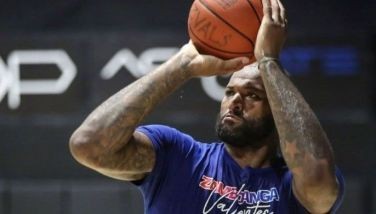Women's stories

WASHINGTON — Farida Nekzad is the director of the Kabul-based Wakht (meaning Time) News Agency, a private, independent service, and she trains young women aspiring to become journalists in Afghanistan.
For her work, Farida’s home and office have been strafed by men who weren’t even chased by the police as they fled. She was once violently shoved but narrowly avoided hitting a taxi. The last drive-by shooting was carried out several months after she received in this capital the International Women’s Media Foundation (IWMF) award for Courage in Journalism in 2008.
Work-related threats aren’t the only challenges faced by Farida. She is here with her only daughter, who’s turning two in two months. While her husband, also a journalist, is educated and receptive to new ideas, Farida, who wears no veil here, told me he remains steeped in the Afghan tradition that men are not supposed to take care of children — especially toddlers.
In 2009, while Farida was visiting New York City, the Committee to Protect Journalists offered to help her and her family relocate to the United States. Farida refused. I asked her why, and she replied that if women like her abandoned the country, who would be left to fight for Afghan women’s rights?
“I cannot leave my country,” she told me.
Many women journalists in other parts of the world face similar woes, though to a lesser extent.
* * *
Attending the first International Conference of Women Media Leaders in this capital has given me surprising insights into the status of my colleagues in other countries.
The problems faced by Afghan women — and not just journalists — are well documented. Less known is that Palestinian women are among the most highly educated in the Middle East and are much more empowered than many other Muslim women in the region. The Palestinian delegate here, Maysoun Odeh-Gangat, manages an all-woman radio station that’s programmed for a female audience.
In Uganda, women emerged from second-class status after the ouster of strongman Idi Amin. Barbara Kaija, editor-in-chief of The New Vision daily, said Ugandan women are increasingly entering mass media, and she wanted more women to join the Vision media conglomerate. In the developing world, Barbara said, this is “the only sensible thing to do” for media executives targeting women’s readership.
Another interesting detail: women journalists in Eastern Europe enjoy high gender parity. This was noted by Howard University communications professor Carolyn Byerly, principal investigator and author of the groundbreaking IWMF Global Report on the Status of Women in the News Media, and she wanted to know why.
This came up during my chat with European journalists on Tuesday night, during a reception at the National Press Club (NPC) where we were welcomed by Washington Mayor Vincent Gray and IWMF executive director Liza Gross, former managing editor of the Miami Herald.
The Western Europeans said there is a glass ceiling in their newsrooms. On the other hand, some Eastern Europeans said they could use more male journalists.
One possible explanation for this, according to the Eastern Europeans, is that when the Soviet Union disintegrated and men were thrown out of work, women, especially those with several children to feed, were forced to find jobs.
Some Eastern Europeans have a joke about lazy husbands. If they got shipwrecked with their spouses and found a boat, the women said they would do the rowing to safety while the men would do nothing. Why? Because the men would say they needed to think. (The humor is probably lost in translation, but you get the drift.)
Possibly because communism promoted egalitarian ideals, Eastern European women who became journalists did not elicit the kind of male resentment that can be found in many parts of the Arab world.
In some countries, one deterrent to career advancement for working moms in the media is their reluctance to work until deadline time late at night.
And while there are women who decry being nothing but sex objects, sex can actually be a powerful female tool. This is according to one of the delegates from Africa, who said that in the northern areas in her country where tribal wars are raging, sex can trigger deadly violence and exacerbate armed conflict.
She said that in those tribal societies, men who refuse to kill their enemies are considered cowards. The refusal diminishes his manhood even in the eyes of his wife. His punishment? The wife gets a headache when he wants sex. What’s a man to do but find their tribe’s enemies and chop them to pieces?
* * *
There are many other interesting stories here, but they were told during our breakout sessions at George Washington University, where everything discussed was confidential. The sessions are needed to prepare a plan of action for our respective regions to break down gender barriers in the news media following the release of the Global Report last Wednesday.
The 391-page report was prepared over two years, with more than 150 researchers conducting face-to-face interviews with executives at over 500 media companies in 59 countries including the Philippines using a 12-page questionnaire. It will be updated every few years to track progress in promoting gender equity in newsrooms around the world. Glass ceilings were identified in 20 of the 59 countries. The main finding was that men occupied “the vast majority” of management jobs and news-gathering positions in most of the nations in the study. But the gender gap is being narrowed.
The Philippines was included in the Asia-Oceania region together with Australia, Bangladesh, China, Fiji, India, Japan, New Zealand, Pakistan and South Korea. Across this region, men in the media were found to outnumber women 4:1, with the gap widest in Japan at 6:1.
Gender parity in media is healthy in the Philippines, where career assignments and advancement hinge on merit rather than gender. This is also true in several other countries, as a number of delegates here have pointed out.
ABC News anchor Diane Sawyer, interviewed live before us by Marvin Kalb for The Kalb Report at the NPC on Tuesday night, said the best part of her job is that people are paying her “to be curious.”
“The hardest part,” she added, “is hair and makeup.”
She’s one of the lucky ones. In many other countries such as Afghanistan, women journalists are still struggling to achieve parity with their male counterparts.
- Latest
- Trending




























